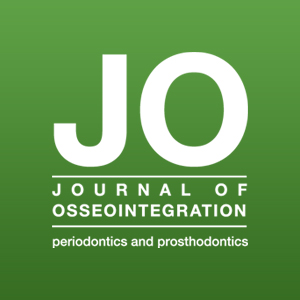Effect of bone quality and osseointegration on stress distribution in the bone tissue surrounding dental implant. A finite element analysis

Submitted: 5 November 2022
Accepted: 28 April 2023
Published: 26 May 2023
Accepted: 28 April 2023
Abstract Views: 1023
PDF: 944
Publisher's note
All claims expressed in this article are solely those of the authors and do not necessarily represent those of their affiliated organizations, or those of the publisher, the editors and the reviewers. Any product that may be evaluated in this article or claim that may be made by its manufacturer is not guaranteed or endorsed by the publisher.
All claims expressed in this article are solely those of the authors and do not necessarily represent those of their affiliated organizations, or those of the publisher, the editors and the reviewers. Any product that may be evaluated in this article or claim that may be made by its manufacturer is not guaranteed or endorsed by the publisher.


 https://doi.org/10.23805/JO.2023.552
https://doi.org/10.23805/JO.2023.552








